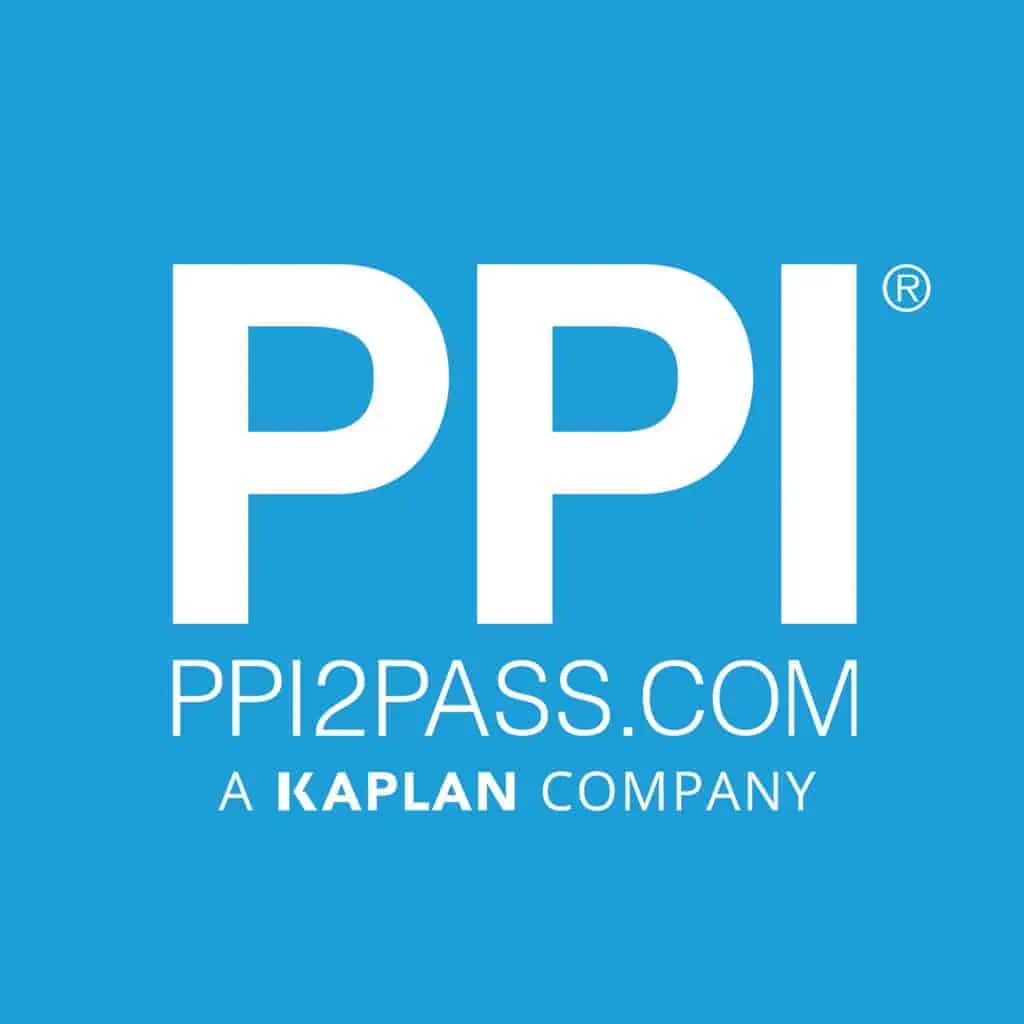In this article (and video above), I talk with Jeffrey Basiliere, EIT, a Project Engineer at the Sugar Cane Growers Cooperative of Florida. Jeffrey not only won our 3-month PPI on-demand course but also shares his winning strategies and study methods for acing the FE exam in this episode.
Here Are Some of the Questions I Ask Jeffrey:
- How did you realize the significance of taking the FE exam for your career?
- What study methods did you use to prepare for the FE exam?
- How do you maintain consistent study habits for the FE exam, given its challenging scope and potential setbacks?
- Did your time in the Marine Corps help you prepare for challenging tasks like the FE exam?
- Does passing the FE exam after initially failing it give you confidence that you could also pass the PE exam if you failed it once?
- How has winning the PPI on Demand course helped you in your preparations for the PE exam?
- What are your winning strategies for structuring your study schedule and habits for your upcoming PE exam?
- How do you effectively manage your time with all the things you’re juggling?
- How can experiences like overcoming exam challenges help build resilience in your career and life?
- What final piece of advice would you offer engineers preparing for their FE or PE exams?
Here Are Some Key Points Discussed in This Episode:
- The FE exam is crucial for an engineering career because it enhances professional credibility and opens doors to more advanced opportunities in the field.
- Preparing for the FE exam involves studying consistently with winning strategies and a structured plan. Engineers achieve mastery by repeating their learning and practicing with exam simulations to understand the exam’s content and format effectively.
- To maintain consistent study habits for the FE exam, individuals stick to a structured schedule, regularly review material, practice with sample exams, and seek support when needed.
- The discipline and learning techniques from the Marine Corps, like focusing on repetition and pushing through challenges, are great preparation for tough tasks like the FE exam.
- Passing the FE exam after an initial failure shows that persistence and determination can lead to success, providing confidence that the same approach can work for the PE exam.
- The PPI on Demand course helps by offering a flexible study schedule and ensuring a solid understanding of each topic through built-in assessments. This structured approach enhances preparation and boosts confidence for the PE exam.
- For your upcoming PE exam, structuring your study schedule with an on-demand course allows flexibility to balance life’s unexpected events. Setting a clear exam date and regularly assessing readiness will help maintain motivation and adjust study plans as needed for optimal preparation.
- Effectively managing time involves setting a structured study schedule that accommodates personal and professional responsibilities. Having a supportive network, both at home and at work, plays a crucial role in maintaining focus and achieving balance amidst multiple commitments.
- Overcoming exam challenges builds resilience by teaching valuable lessons in perseverance and problem-solving. These experiences prepare individuals to handle setbacks in their careers and personal lives, turning challenges into opportunities for growth and development.
- For engineers preparing for their FE or PE exams, it’s crucial to simulate exam conditions by taking practice tests in a quiet environment with timed sessions. Learning to manage stress, stay hydrated, and allocate time effectively to each question will help optimize performance on exam day.
About: Jeffrey Basiliere, EIT

Sources:
Sugar Cane Growers Cooperative of Florida
FE Exam
PE License
Connect with Jeffrey Basiliere, EIT, on LinkedIn
This Episode Is Brought to You by PPI, A Kaplan Company:
PPI
I hope you found this week’s FE Exam article helpful. In upcoming articles, I will answer more FE Exam questions and run through more practice problems. We publish videos bi-weekly on our Pass the FE Exam YouTube Channel. Be sure to visit our page here and click the subscribe button, as you’ll get expert tips and tricks – to ensure your best success – that you can’t get anywhere else. Believe me, you won’t want to miss a single video.
Lastly, I encourage you to ask questions in the comments of the videos or here on this page, and I’ll read and respond to them in future videos. So, if there’s a specific topic you want me to cover or answer, we have you covered.
I’ll see you next week.
Anthony Fasano, P.E.
Engineering Management Institute
Author of Engineer Your Own Success
 Mauricio Bernal is currently pursuing a Bachelor of Science in Civil Engineering and a Bachelor of Business Administration in Finance at the University of Missouri-Kansas City, with an expected graduation in May 2026. On campus, he is a UMKC Trustee’s Scholar, serves as Vice President of the Society of Hispanic Professional Engineers, and is actively involved in the Latinx Student Union, American Society of Civil Engineers, and the concrete canoe team. After his freshman year, Mauricio began his internship at Burns & McDonnell in the transmission and distribution global practice, working on underground and submarine cable projects. Returning for his second summer, he is now contributing to the power group, providing civil work for solar, wind, and power plant projects. On Saturdays, he serves as a Data Science Instructor for the K-12 Initiative Pipeline Programs, teaching soil science and developing STEM curricula for over 200 students. Through his studies and his time at Burns & McDonnell, Mauricio has gained experience with Autodesk Civil 3D, SolidWorks, HydroCAD, Power BI, and FLO-2D. Mauricio is preparing to take the FE exam in Spring of 2025.
Mauricio Bernal is currently pursuing a Bachelor of Science in Civil Engineering and a Bachelor of Business Administration in Finance at the University of Missouri-Kansas City, with an expected graduation in May 2026. On campus, he is a UMKC Trustee’s Scholar, serves as Vice President of the Society of Hispanic Professional Engineers, and is actively involved in the Latinx Student Union, American Society of Civil Engineers, and the concrete canoe team. After his freshman year, Mauricio began his internship at Burns & McDonnell in the transmission and distribution global practice, working on underground and submarine cable projects. Returning for his second summer, he is now contributing to the power group, providing civil work for solar, wind, and power plant projects. On Saturdays, he serves as a Data Science Instructor for the K-12 Initiative Pipeline Programs, teaching soil science and developing STEM curricula for over 200 students. Through his studies and his time at Burns & McDonnell, Mauricio has gained experience with Autodesk Civil 3D, SolidWorks, HydroCAD, Power BI, and FLO-2D. Mauricio is preparing to take the FE exam in Spring of 2025. Katie Lev is an accomplished assistant structural engineer in training at Burns & McDonnell, with a Bachelor of Science in Civil Engineering and a Master of Science in Structural Engineering from Northwestern University. Day to day, she mainly focuses on supporting coal-burning power plants to add natural gas capacity, plant services and most recently solar power generating facilities. During her time at Northwestern, she served as a Civil/Structural Engineering Intern at Infrastructure Engineering, Inc. as well as a Structural Intern at Burns & McDonnell. Additionally, she worked as a tour guide at Northwestern’s Office of Admissions as well as a teaching assistant and student grader. In her spare time, she co-managed the Smart Tree project for Engineers for a Sustainable World and held a leadership role in Relay for Life. Katie recently passed her FE exam in the Spring of 2023.
Katie Lev is an accomplished assistant structural engineer in training at Burns & McDonnell, with a Bachelor of Science in Civil Engineering and a Master of Science in Structural Engineering from Northwestern University. Day to day, she mainly focuses on supporting coal-burning power plants to add natural gas capacity, plant services and most recently solar power generating facilities. During her time at Northwestern, she served as a Civil/Structural Engineering Intern at Infrastructure Engineering, Inc. as well as a Structural Intern at Burns & McDonnell. Additionally, she worked as a tour guide at Northwestern’s Office of Admissions as well as a teaching assistant and student grader. In her spare time, she co-managed the Smart Tree project for Engineers for a Sustainable World and held a leadership role in Relay for Life. Katie recently passed her FE exam in the Spring of 2023. Matthew currently serves as a content creator and host of The Engineering Project Management Podcast. A civil engineer by trade, Matthew has developed a passion for construction and stormwater management by way of maintenance and rehabilitation services. Matthew has also had experience working with private consulting firms and public agencies, and has even held a role of an educator. As such, he loves to lead, build, mentor, and help those in need.
Matthew currently serves as a content creator and host of The Engineering Project Management Podcast. A civil engineer by trade, Matthew has developed a passion for construction and stormwater management by way of maintenance and rehabilitation services. Matthew has also had experience working with private consulting firms and public agencies, and has even held a role of an educator. As such, he loves to lead, build, mentor, and help those in need.
 Oscar Gutierrez is a dedicated structural engineer with a strong academic foundation and extensive experience in the field. He earned his degree in Civil Engineering from Santiago Marino Polytechnic University in Venezuela in 2017, followed by advanced coursework at the Albert Nerken School of Engineering at Cooper Union University in Manhattan, New York City. At Cooper Union, Oscar honed his skills in key areas such as AISC Steel Design, ACI Reinforced Concrete, and industry-standard software like Revit and AutoCAD.
Oscar Gutierrez is a dedicated structural engineer with a strong academic foundation and extensive experience in the field. He earned his degree in Civil Engineering from Santiago Marino Polytechnic University in Venezuela in 2017, followed by advanced coursework at the Albert Nerken School of Engineering at Cooper Union University in Manhattan, New York City. At Cooper Union, Oscar honed his skills in key areas such as AISC Steel Design, ACI Reinforced Concrete, and industry-standard software like Revit and AutoCAD.

